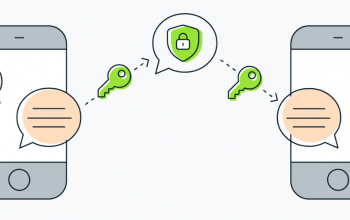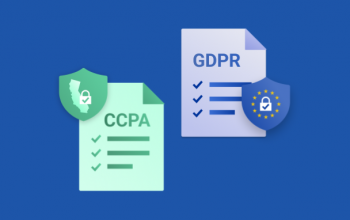In our increasingly digital world, the phrase data breach has become almost commonplace, yet its implications are often misunderstood. From multinational corporations to individual users, nobody is immune from the risks associated with unauthorized access to sensitive information. Understanding what a data breach entails and how to protect oneself is not just a matter of technical knowledge—it is a necessity for personal security, financial stability, and digital privacy.
Understanding Data Breaches: Beyond the Headlines
A data breach occurs when confidential or protected information is accessed, disclosed, or stolen by unauthorized parties. While the term is often associated with high-profile corporate hacks, data breaches affect individuals, small businesses, and government agencies alike. Notably, the consequences of a breach can range from minor inconveniences to catastrophic financial and reputational damage.

Data breaches are not monolithic; they vary in scope, intent, and impact. They generally fall into several categories:
- Personal Data Breaches – These involve private information such as social security numbers, email addresses, passwords, or financial records. For individuals, the consequences often manifest as identity theft, financial fraud, or unauthorized account access.
- Corporate Data Breaches – Businesses store vast amounts of client and operational data. Breaches can expose customer information, intellectual property, or internal communications, potentially leading to legal liabilities and loss of consumer trust.
- Government or Institutional Breaches – When sensitive governmental, medical, or educational data is compromised, the fallout can impact public safety, national security, or societal trust in institutions.
The distinction is crucial because each type of breach demands a different approach for prevention and response.
Common Causes of Data Breaches
Understanding how breaches happen is key to prevention. While sophisticated cyberattacks often grab headlines, human error and systemic vulnerabilities are equally significant contributors.
Technical Vulnerabilities
Outdated software, unpatched operating systems, and misconfigured servers are common technical weaknesses exploited by attackers. For instance, vulnerabilities in widely-used software libraries can create openings for hackers to infiltrate systems at scale. A single unpatched server may allow attackers to extract sensitive data across millions of users.
Human Error
Human behavior remains the weakest link in cybersecurity. Weak passwords, repeated use of the same password across platforms, misdirected emails, or accidentally publishing sensitive information online can all lead to breaches. Phishing emails and social engineering attacks exploit human psychology, tricking individuals into revealing credentials or downloading malicious software.
Malicious Attacks
Cybercriminals employ various techniques to obtain data illegally. These include:
- Ransomware attacks – Encrypting company data and demanding payment for its release.
- SQL injection attacks – Exploiting database vulnerabilities to extract sensitive information.
- Credential stuffing – Using stolen passwords from one platform to access multiple accounts.
Even with sophisticated defenses, the evolving tactics of cybercriminals make vigilance essential.
Third-Party Risks
Many organizations rely on third-party vendors for cloud storage, payment processing, or IT services. A breach in a vendor’s system can cascade into a significant compromise for the primary organization. This underlines the importance of scrutinizing the security posture of third-party partners.
Consequences of Data Breaches
The ramifications of a data breach extend far beyond the immediate loss of information. Both individuals and organizations face multifaceted consequences:
For Individuals
- Financial Loss – Unauthorized transactions, drained bank accounts, or fraudulent loans.
- Identity Theft – Criminals can open accounts, apply for loans, or even commit crimes under your identity.
- Compromised Accounts – Social media, email, and cloud accounts may be hijacked, exposing private communications.
- Emotional Stress – Breaches can induce anxiety, mistrust, and a sense of vulnerability in everyday digital life.
For Organizations
- Regulatory Penalties – Laws such as GDPR in Europe and CCPA in California impose heavy fines for failing to protect customer data.
- Reputational Damage – Customers may abandon a brand after learning their data was mishandled.
- Operational Disruption – Investigating a breach and restoring systems can halt business operations for days or weeks.
- Intellectual Property Theft – Proprietary research, product designs, or trade secrets can be exploited by competitors or foreign entities.
Detecting a Data Breach Early
Early detection can significantly mitigate the damage of a breach. Individuals and organizations alike can implement several monitoring strategies:
- Credit and Account Monitoring – Regularly review credit reports and bank statements for unusual activity.
- Breach Detection Services – Platforms like Have I Been Pwned or Firefox Monitor alert users if their credentials appear in leaked databases.
- Behavioral Monitoring – Unusual login attempts, failed password entries, or atypical network traffic can indicate unauthorized access.
- Enterprise Tools – For organizations, intrusion detection systems (IDS), security information and event management (SIEM) tools, and data loss prevention (DLP) systems are essential.
Preventive Measures: Building a Cyber-Resilient Strategy
Prevention is invariably more cost-effective than remediation. While no system is completely impervious, combining technical solutions with disciplined human practices can substantially reduce the risk.
Personal Cybersecurity Practices
- Use Strong, Unique Passwords – Avoid dictionary words and reuse. Consider passphrases or randomly generated strings stored in a secure password manager.
- Enable Multi-Factor Authentication (MFA/2FA) – Adds a layer of verification beyond passwords, such as biometric data or time-based codes.
- Regular Updates – Keep operating systems, applications, and devices updated to patch known vulnerabilities.
- Exercise Caution Online – Verify email senders, avoid clicking unknown links, and refrain from sharing sensitive information unnecessarily.
- Data Encryption and Backups – Encrypt sensitive files and maintain offline or cloud backups to protect against ransomware and accidental loss.
Organizational Measures
- Employee Education and Security Awareness – Train staff to recognize phishing, social engineering, and insider threats.
- Regular Security Audits and Penetration Testing – Proactively identify weaknesses before attackers do.
- Access Control and Least Privilege Principle – Limit access to sensitive data strictly to those who need it.
- Incident Response Planning – Develop and regularly test response strategies for various breach scenarios.
- Vendor Risk Management – Evaluate third-party security measures and contractual obligations rigorously.
Responding to a Data Breach
Even with precautions, breaches can occur. Swift, structured responses minimize damage:
- Immediate Action – Change affected passwords, revoke compromised credentials, and contain the breach.
- Notification – Inform affected individuals, regulators, and internal stakeholders as required by law.
- Investigation – Conduct forensic analysis to understand the breach’s origin, method, and scope.
- Remediation – Patch vulnerabilities, reinforce security measures, and monitor systems for secondary attacks.
- Long-Term Measures – Review policies, update training, and improve preventive systems to prevent recurrence.
For individuals, this often involves credit monitoring, reporting identity theft, and strengthening personal account security. For organizations, a breach can trigger compliance audits, customer notifications, and public relations efforts.
Emerging Trends in Data Security
The landscape of data breaches evolves constantly. Awareness of emerging threats is crucial:
- AI-Powered Attacks – Cybercriminals are increasingly using artificial intelligence to automate phishing campaigns and crack passwords.
- Zero Trust Architecture – A security model that assumes no user or system is inherently trustworthy, continuously verifying credentials.
- Cloud Security Concerns – As organizations migrate to cloud infrastructure, misconfigurations and over-permissive access remain critical risks.
- Biometric Security – Fingerprint and facial recognition are becoming more common but also present new privacy and breach concerns.
Being proactive rather than reactive is essential. Individuals and organizations must adopt forward-looking strategies rather than relying solely on historical knowledge.

Cybersecurity as a Lifestyle
A data breach is not merely a technical incident—it is a stark reminder of how intertwined our lives have become with digital systems. Protecting personal and organizational information requires vigilance, education, and proactive strategies. While the threat landscape may seem daunting, adopting strong passwords, enabling multi-factor authentication, maintaining updated systems, and fostering security-aware behavior can create a formidable defense against potential breaches.
Ultimately, cybersecurity is not a one-time effort but a continuous lifestyle. By integrating digital hygiene into daily routines and cultivating a culture of awareness, individuals and organizations alike can reduce the likelihood and impact of data breaches, safeguarding privacy, finances, and trust in an increasingly connected world.



